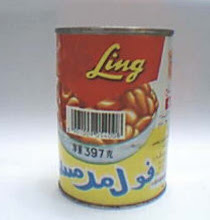Traces of the urban past are becoming increasingly fashionable it seems. Industrial is chic, deco is in and as we all grow older in complex, confused and confusing times, the post-war era is rapidly acquiring the shiny patina of nostalgia in a glow that combines the mysterious and far-away with the familiar and comforting.
Is it right to assign the name 'ghost sign' to something that has been deliberately disinterred? Where the traces of yesterday, accidentally preserved elsewhere, merge with retrostalgic acts of preservation? I guess peeling back layers of paint and preserving a formerly superseded image, as in below, is a kind of archaeological kindness, a kiss of life for the formerly dead and buried.
Today I found and snapped the two shops below. The first shopfront, now a French pâtisserie, is fittingly located opposite the cemetery in Nicholson Street, Carlton. The second - the remains of the milkshake - is also in Carlton and is also a café. (The kids hanging out in the pic are my two. They would have have loved the shop's former offerings):
Is it right to assign the name 'ghost sign' to something that has been deliberately disinterred? Where the traces of yesterday, accidentally preserved elsewhere, merge with retrostalgic acts of preservation? I guess peeling back layers of paint and preserving a formerly superseded image, as in below, is a kind of archaeological kindness, a kiss of life for the formerly dead and buried.
Today I found and snapped the two shops below. The first shopfront, now a French pâtisserie, is fittingly located opposite the cemetery in Nicholson Street, Carlton. The second - the remains of the milkshake - is also in Carlton and is also a café. (The kids hanging out in the pic are my two. They would have have loved the shop's former offerings):
And then there was a visit to Sydney recently, where we stumbled on the Paddington Reservoir Gardens, a park built around and amongst the ruins of a 19th century reservoir: http://www.cityofsydney.nsw.gov.au/development/cityimprovements/completedprojects/PaddingtonReservoirGardens.asp
These three urban interventions are all in old, inner-city, upmarket locales. And hence, a certain well-fed aesthetic about the past comes into play. Their concern is, indeed, largely with the aesthetic. (A caveat added later: I don't mean to imply that a concern with aesthetics is a shallow one. As my partner, a designer, pointed out, the same emotional pull that draws people to the aesthetics of these traces is the one that draws me in too).
Certainly it's better to have these traces around than not. But it makes me wonder: how much of the power of ghost signs is in their ephemerality, in their tenacious sticking around for decades even when they were marked with death, intended to be temporary? If you seek out the ghost, will it still haunt you the way it does when it finds you? Or does it turn into a pretty ornament, a pet? Is this the point that memory, as embodied lived experience, turns into history, a repackaged commodification of the past that lives in the present as a disembodied product? There is little connection between the current park in fashionable Paddington, in all its architectural clean lines and artsy quotes rendered in moss and steel, and the reservoir's former crucial survival role in more gritty Victorian times as a place to store and distribute much-needed water. Nor between the French eatery and the prosaic reasons for the signs' existence: to sell product. The mass marketing of their time, something that has become very clear to me as I pored through the Lewis & Skinner records.






No comments:
Post a Comment